The Iranian revolution was the first Islamist revolution of the modern era, so it’s no surprise that it would still loom large, 40 years later—not just for Iran or for Shiites, but for Sunni Islamists as well. The revolution’s legacy has been mixed. At first, the Islamic revolution emboldened Sunni Islamist groups, galvanizing their followers into thinking that revolution could be possible elsewhere. But Sunni Islamists soon soured on the Iranian experience due to ideological disagreements, sectarian animus, and strategic considerations.
In hundreds of interviews over the years with members and officials of Muslim Brotherhood branches and affiliates across the region, we have never once heard Iran mentioned as a model to be emulated. Despite this, the legacy of the Iranian revolution continues to color how the West views mainstream Islamist groups like the Brotherhood. For them, the revolution has become a constraint and a burden. This wasn’t always the case. How and why did it change?
Islamists Emboldened
However radical Ayatollah Ruhollah Khomeini and other Shiite clerics were, they sought to avoid alienating Sunnis. More importantly, being Islamists themselves, they saw movements like the Muslim Brotherhood as potential allies to be courted. The Sunni-Shiite divide mattered, but sectarian frictions were not as acute as they are today. The revolution itself was part of a broader cross-sectarian religious revival throughout the region. Shared ideology around the centrality of Islam’s role in politics took precedence over sect, or at least it seemed to. In other words, Sunni Islamists had more in common with Shiite Islamists than they did with Sunni secularists. When Khomeini declared that “Islam was political or nothing else,” he was saying something that Sunni Islamists had themselves long said.
 Khomeini’s political theology, which diverged from the views of the traditional Shiite religious establishment, argued that direct clerical engagement in politics did not require waiting until the return of the Imam. None other than Sayyid Qutb—in many ways the Egyptian Brotherhood’s last true revolutionary—had developed something of a following in Iran, with much of his work being translated and disseminated in Farsi. As Yusuf Unal notes, “Qutb was an influential figure among Iranian revolutionaries,” with his ideas playing “an instrumental role in shaping the discourse of Islamism in pre-revolutionary Iran.”
Khomeini’s political theology, which diverged from the views of the traditional Shiite religious establishment, argued that direct clerical engagement in politics did not require waiting until the return of the Imam. None other than Sayyid Qutb—in many ways the Egyptian Brotherhood’s last true revolutionary—had developed something of a following in Iran, with much of his work being translated and disseminated in Farsi. As Yusuf Unal notes, “Qutb was an influential figure among Iranian revolutionaries,” with his ideas playing “an instrumental role in shaping the discourse of Islamism in pre-revolutionary Iran.”
Ironically, it was Rached Ghannouchi of Tunisia’s Ennahda party, perhaps the most “progressive” of today’s Islamist leaders, who was initially most sympathetic to the aims of the Iranian revolution. During his time as a student in Paris, he participated in the Islamic students association, which was headed by an Iranian student who introduced him to the work of Mehdi Bazargan, an opposition leader who served as Iran’s first post-revolutionary prime minister in February 1979. In his biography of Ghannouchi, Azzam Tamimi writes that “for Ghannouchi, the arrangement reflected a high degree of tolerance, for no one objected to the Shiism of the Iranian student or considered it an impediment to his election as head of a society, the rest of whose members were all Sunnis.”
“As we readied to accept the notion that conflicts other than the ideological existed along the political and social fronts, the Iranian revolution came to give us a new set of Islamic discourses. It enabled us to Islamize some leftist social concepts and to accommodate the social conflict within an Islamic context.”
Disillusionment
The flirtation didn’t last long, with Sunni Islamists, almost across the board, souring on the Iranian experiment. The leftism Ghannouchi points to quickly became obscured by the Islamic Republic’s intensifying authoritarianism and intolerance of any opposition. By 1984, according to Tamimi, Ghannouchi was criticizing the ayatollahs “for portraying themselves as if they were the possessors of absolute truth, as if they alone understood the message of Islam, and as if their revolution was the only legitimate method of change.”
During the 1980s, an important shift was taking place among mainstream Islamist movements, as Hamid discusses in “Temptations of Power.” With a religious revival spreading across the region, they decided to take advantage of their growing popularity by entering parliamentary politics (to the extent that regimes allowed them). The alliance the Egyptian Brotherhood formed with the secular Wafd party won 58 seats in the 1984 parliamentary elections, up until then the best-ever result for the Egyptian opposition. It helped that the 1984 and 1987 elections were the most competitive Egypt had seen up until then (although far from free and fair). Jordan’s “transition” seemed to hold even more promise. In 1984, the Jordanian Muslim Brotherhood contested elections on the university, municipal, and national levels, exceeding expectations in each. The “Islamic trend” swept the elections for the University of Jordan’s student union, while on the national level, for the first time since 1967, reasonably free by-elections were held for eight vacated parliamentary seats, with the Brotherhood winning two of them by comfortable margins.
With Sunni Islamist movements calling for gradual democratization through elections, Iran’s authoritarianism and its model of revolutionary change was becoming inconvenient. Khomeini’s seizure of power through regime overthrow was quite different from trying to win a few parliamentary seats here and there. From a public relations standpoint, hailing Iran as an inspiration would have also amplified already substantial fears that the Brotherhood’s true aim was total revolution rather than gradual reform.
Geopolitical developments would also play a role in entrenching a gap between Sunni and Shiite Islamists. Immediately after the Islamic revolution, relations between the Iranian and Syrian regimes remained tense for several years. However, when revolutionary Iran solidified its alliance with a Syrian regime that was waging war against Islamists at home, Muslim Brotherhood affiliates across the region increasingly looked at Iran with suspicion. The Syrian Muslim Brotherhood, bearing most of the brunt of Hafez al-Assad’s repression, shifted its criticism of the Assad regime in a more explicitly anti-Shiite direction. (Previously, Sunni Islamists didn’t see the Assad family’s Alawi sect as Shiite per se, and even most Shiite Twelver clerics did not consider Alawis to be true Shiites).
The distance with Iran would only grow as Sunni Islamists learned a strategic lesson from the 1990s and 2000s: Winning elections was not enough to assume power. Just as important was reassuring the West that they would not follow the Iranian model or pursue “one man, one vote, one time.” In 1992, when the Islamic Salvation Front (FIS) were on the verge of winning parliamentary elections in Algeria, the military—supported by the United States—canceled the election and dissolved the party, sparking a decade-long civil war. In 2006, after Hamas swept Gaza’s parliamentary elections, the United States and its Western allies refused to recognize its victory and decided to impose sanctions on Gaza. It was yet another reminder of what an important determinant the United States was in whether Islamists would actually be allowed to take office.
To neutralize American opposition to their electoral participation, Islamists elsewhere in the region put renewed emphasis on persuading Western audiences that they did not want an Iranian-style revolution. As Brotherhood Member of Parliament Magdy Ashour remarked in 2007: “We would like to change the idea people have of us in the West…We do not want a country like Iran, which thinks that it is ruling with a divine mandate.” Even during the throes of the 2011 Egyptian uprising, for instance, prominent Muslim Brotherhood leaders took the time to pen multiple op-eds in major Western newspapers to this effect. The then-relatively unknown Brotherhood functionary Mohammed Morsi, who would later become Egypt’s president, wrote that “this is Egypt’s revolution, not ours,” while his colleagues Essam al-Erian and Abdel Moneim Abou al-Futouh insisted that the Brotherhood wanted democracy and gradual reform, not an Islamic revolution. Similarly, when Ghannouchi returned from exile in March 2011, Ennahda reportedly “instructed its supporters to not come to the airport to meet him upon his return for fear of creating images reminiscent of Khomeini’s return to Iran.”
Iran and its Lebanese proxy Hezbollah’s backing of Bashar al-Assad during Syria’s civil war intensified tensions between Sunni Islamists and the Islamic Republic. Brotherhood leader Gamal Heshmat condemned “Iran’s expansionist project in the region,” while al-Erian reportedly threatened that the Arab Spring could come to Iran. In June 2013, the Brotherhood-linked preacher Yusuf al-Qaradawi condemned Iran and Hezbollah—in English, the Party of God—by calling the latter the “party of the devil.”
Still Constrained
Despite this criticism of Iran, Sunni Islamist movements remain tainted and constrained by its legacy. Top U.S. policymakers continue to paint all Islamists, Sunni and Shiite, with one broad brush. “They are all swimming in the same sea,” claimed former Secretary of Defense James Mattis. Dennis Ross advised the United States “not [to] reach out to Islamists,” a label under which he lumped ISIS, the Muslim Brotherhood, Ennahda, and Iran. “What the Islamists all have in common is that they subordinate national identities to an Islamic identity…Their creed is not compatible with pluralism and democracy.”
It has been 40 years since the Iranian revolution began, and over the course of this period, attitudes toward the Iranian experiment with Islamic governance have both run the gamut and run their course. Sunni Islamists have been souring on the Iranian revolution for different reasons and in different ways. But despite their criticism of Iran, Islamist groups are still widely associated with the Islamic revolution and accused of harboring secret intentions of following Iran’s path. Four decades after Iran’s revolution, Islamists are still constrained by a legacy they can’t quite seem to unshake.
The Brookings Institution is committed to quality, independence, and impact.
We are supported by a diverse array of funders. In line with our values and policies, each Brookings publication represents the sole views of its author(s).

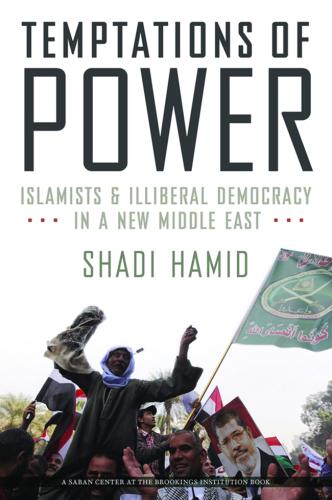
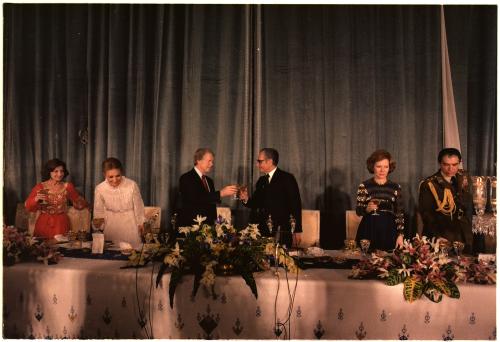
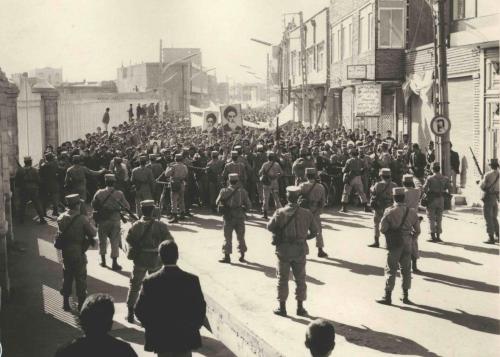
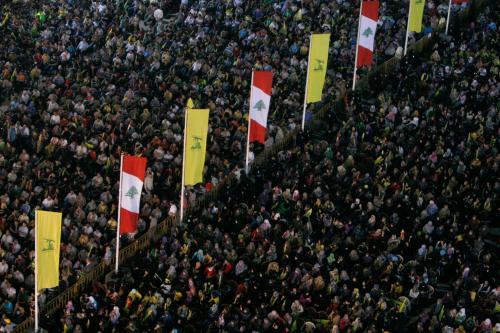
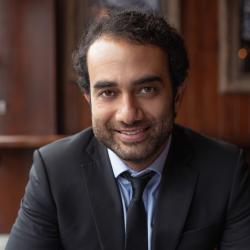
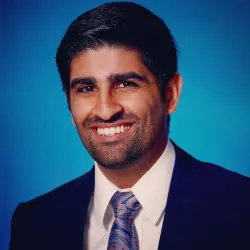



Commentary
What Iran’s 1979 revolution meant for the Muslim Brotherhood
January 24, 2019